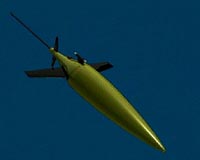| . |  |
. |
Ny-Aalesund, Norway (AFP) May 8, 2009 Out of place in the snowy, polar landscape, the train that once hauled coal out of the mountain serves as a reminder to scientists at the Ny-Aalesund Arctic research station of the origin of the planet's woes. Before becoming an international research station where scientists study the effects of global warming, this cluster of coloured buildings in the northwest corner of Norway's Svalbard archipelago was once a mining site for fossil fuels now blamed for climate change. A firedamp explosion in the coal mine killed 21 men in 1962. The disaster ended the mining era in Ny-Aalesund, which is closer to the North Pole just 1,200 kilometers (745 miles) away than to Oslo, where the tragedy brought down the government. Scientists in white lab coats have since replaced the black-faced miners, and the remote town -- the northernmost in the world -- has a "broader broadband than London," boasts Kings Bay, the company that runs the site. There is however no mobile network, and visitors are asked to turn off their cell phones to avoid disturbances to the research station's finely-calibrated measuring instruments. "It's good to be far away to measure trends" in carbon dioxide emissions, Swedish researcher Johan Stroem said from the Zeppelin atmospheric measuring station, located on a peak overlooking Ny-Aalesund. "When you're in the middle of it, you don't see it. Exactly like when you're in the middle of the forest, you can see a few trees but not the whole thing," he said. A somewhat erratic cable car brings visitors and researchers up to Zeppelin, which measures, among other things, fine particles from forest fires in North America brought to the Arctic by air currents. In graphics taped to the walls, all the arrows point upwards, with particularly sharp increases seen in recent decades. "It's not so much the high level of carbon dioxide in the atmosphere that worries me. Humankind will always adapt and change its lifestyle. We won't go on vacation to the Maldives anymore. But it's the rate at which the concentrations increase which is worrying," Stroem said. "Over the past 20 years, we've seen a jump of CO2 concentrations at a speed which has never been observed before," he said. The Svalbard archipelago is on the frontline of global warming. Each year, the volume of its ice cap shrinks by 13 cubic kilometers (3.11 cubic miles) or the equivalent of 5.2 million Olympic-size swimming pools. And the glaciers around Ny-Aalesund are no exception. "From one year to the next, I can see them retreat with my own eyes," said Stroem, who has been coming to the research station since 1999. Jack Kohler, a US glaciologist at the Norwegian Polar Institute, paints a dark picture of the future. "In 50 to 100 years from now these glaciers will be shadows of themselves. The larger ones will still be here but the smaller ones will be gone," he predicted, expressing concern about the largely overlooked impact the melting of smaller glaciers will have on rising ocean levels. At the town limits, a docking port for blimps attests to Ny-Aalesund's unique role in the history of polar expeditions. Norwegian explorer Roald Amundsen, Italy's Umberto Nobile, and Lincoln Ellsworth of the United States left here in 1926 aboard the blimp Norge to become the first team ever to reach the North Pole with certainty. At the rate at which the sea ice is melting today, the North Pole will soon be more easily accessible by boat.
Share This Article With Planet Earth
Related Links Beyond the Ice Age
 Seaglider Monitors Waters From Arctic During Record-breaking Journey Under Ice
Seaglider Monitors Waters From Arctic During Record-breaking Journey Under IceSeattle WA (SPX) May 04, 2009 The University of Washington has surpassed its 2-year-old world record for operating a glider under the ice, this time by successfully operating one of its seagliders for six months as it made round trips hundreds of miles in length under the ice at Davis Strait. The result contributes to the longest continuous measurement of fresh water exiting the Arctic through the Canadian Arctic Archi ... read more |
|
| The content herein, unless otherwise known to be public domain, are Copyright 1995-2009 - SpaceDaily. AFP and UPI Wire Stories are copyright Agence France-Presse and United Press International. ESA Portal Reports are copyright European Space Agency. All NASA sourced material is public domain. Additional copyrights may apply in whole or part to other bona fide parties. Advertising does not imply endorsement,agreement or approval of any opinions, statements or information provided by SpaceDaily on any Web page published or hosted by SpaceDaily. Privacy Statement |